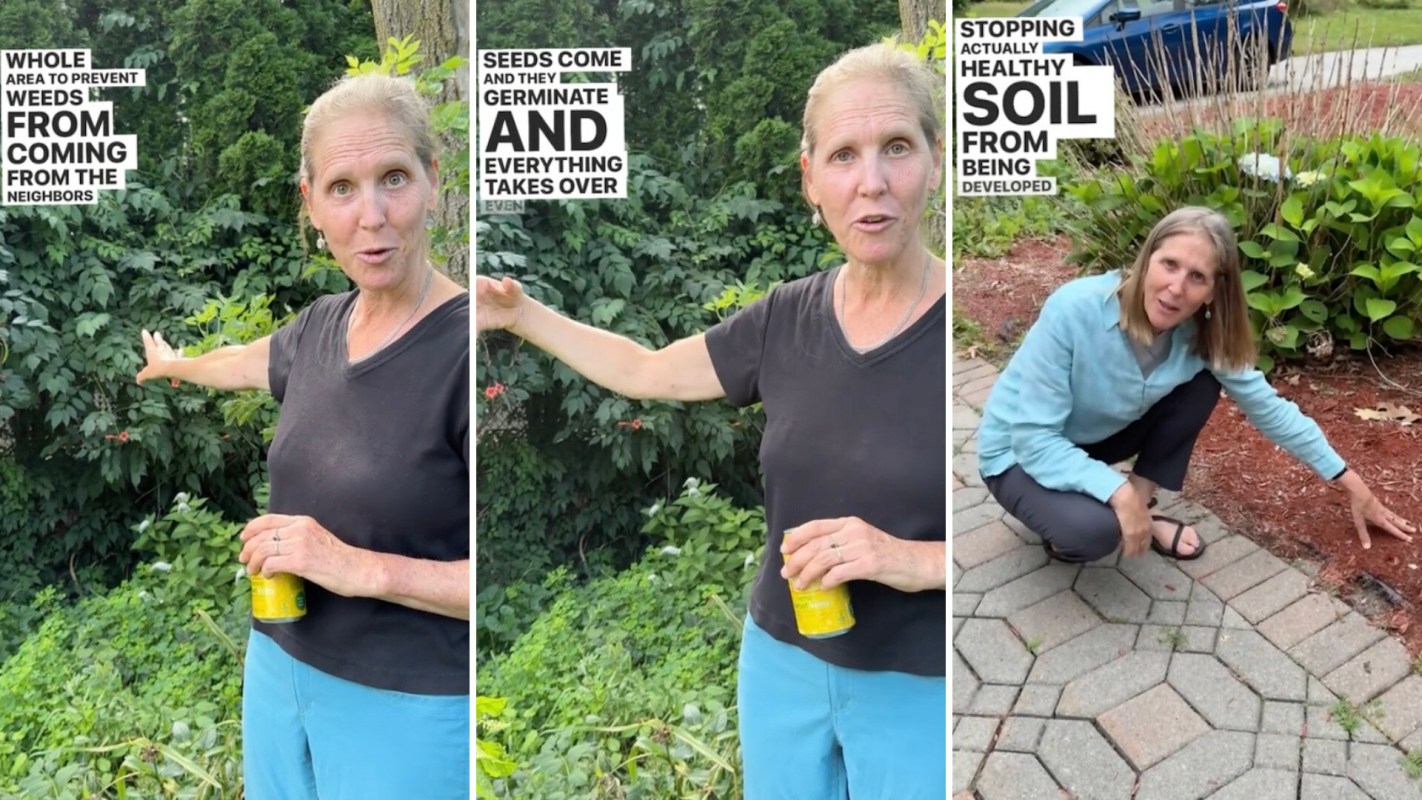A garden coach from Boston has filmed a couple of interactions with clients explaining why an increasingly common method to stop weeds is not worth the effort.
Jess, the garden coach, uploaded the footage to their TikTok account (@youcandoitgardening) warning against landscaping fabric.
The scoop
Jess began by explaining that the material doesn't typically work to fulfill the expectations of consumers, as seeds will just be spread by the wind, settle on top of the fabric, and grow and spread anyway.
In another client's yard, Jess then said that plastic landscaping fabric prevents healthy soil from being developed.
She called on the gardener to get rid of the fabric and add a layer of compost to provide vital nutrients to the soil, then add a natural brown mulch.
The video concluded with Jess saying that existing fabric should be removed from around plants.
@youcandoitgardening I steer people away from landscape fabric when I get asked. I think there is this idea out there that it really works to prevent weeds from growing. It doesn't and I think it's a waste of time and money. Seeds fly around and land and germinate wherever they can, even on the mulch. Fabric will not prevent that from happening. It looks bad when the mulch blows off and then you need to re-apply it enough to cover the fabric again. If you're going to have to apply mulch again anyway you might as well skip the fabric. A layer of about two inches of mulch will help a lot but you still need to weed. There is no way around that. If you're planning to add mulch to an area which already has it, add compost first. It will all break down and create wonderful soil for you. However, layer upon layer of mulch makes it very difficult to break down. A reminder to not put mulch up against any plants. And please, no mulch mounds/volcanoes around trees. That's especially bad. Using fabric impacts the quality of the soil negatively. It can prevent adequate amounts of oxygen and healthy microorganisms that create great soil. However, the use of fabric also could be useful in circumstances involving pipes and drainage, to prevent clogging. I can get behind that. Dyed mulch: just say no. Why is it dyed in the first place? What are they trying to hide? Often there is particle board or pallets ground up in there and the dyes have toxins in there. None of this is good for your garden. Location: client's house (as always, the videos are done by clients and these were done by Lisa and Stephanie) About me: I'm a garden coach and consultant in zone 6 in the Boston area but almost all of the principles I talk about are applicable to any garden. Go to my website on my profile to schedule consultations and more. Unfortunately I don't have time to answer all the questions so please chime in to help others if you have information to share🌸 #landscapefabric #mulch #dyedmulch #gardeningforbeginners #gardeningtips #gardening101 #gardencoach #goodsoil #gardentok ♬ original sound - You Can Do It Gardening
"I steer people away from landscape fabric when I get asked," Jess captioned the video. "I think there is this idea out there that it really works to prevent weeds from growing. It doesn't and I think it's a waste of time and money."
How it's helping
Avoiding landscape fabric should stop green-fingered growers from spending money unnecessarily and avoid the likelihood that they will need to do more work in the long run.
Since the material impacts soil quality in addition to not keeping the weeds out, you're still going to have to carry out weeding but you'll also need to spend more money to try to revive the soil that has lost its quality after the application of landscape fabric.
Jess also advised against dyed mulch since it often contains unhelpful toxins, and she noted that mulch volcanoes are "especially bad" for trees.
What everyone's saying
Commenters on the video had similar feelings towards the supposedly helpful gardening material.
"Landscape fabric is a nightmare," one said, with another adding, "Digging out rock and fabric when I started updating the foundation beds has been one of the worst project[s] I have taken on as a new homeowner."
Meanwhile, one landscaper told of one good reason to apply landscape fabric.
"As a landscaper we mainly use fabric on landscape rocks to control erosion," they said. "Fabric on mulch is useless cause mulch eventually decomposes."
Indeed, using landscape fabric under stones or rocks can be a good way to stop them from sinking into the soil in wet weather. But using the material to control weeds will likely do more harm than good.
Join our free newsletter for easy tips to save more, waste less, and help yourself while helping the planet.









